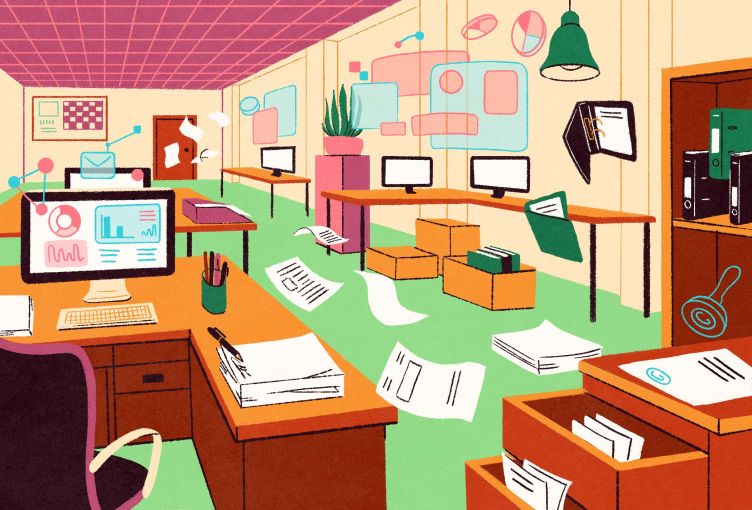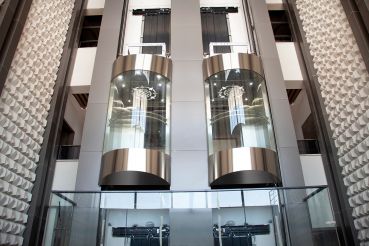AI Firms Are Hunting for A Lot of Office Space
So what if their products are aimed at supplanting humans? The humans behind it need a place to work.
By David M. Levitt February 19, 2024 6:00 am
reprints
Artificial intelligence. Will it become the space user that boosts an office market hungering for tenants?
The jury is still out on that question. But the initial indicators look good.
“In a market as challenged as San Francisco is, it is the one bright spot that is showing growth,” said Derek Daniels, regional director of research for brokerage Colliers (CIGI). His remit includes the San Francisco Bay Area, which encompasses San Francisco proper and Silicon Valley, where many of the innovations in computer and information technology get their start. “Companies are saying we are going to commit to more space than we had previously.”
In a rare bit of good news, the largest lease in the fourth quarter of 2023 in the San Francisco office market was OpenAI’s commitment to 486,600 square feet at 1455 and 1515 Third Street in the Mission Bay submarket, Daniels said.
And the second-largest was the AI startup Anthropic taking 230,315 square feet at 500 Howard Street in the city’s South Financial District. Anthropic describes itself on its website as a company that produces “AI research and products that put safety at the frontier.” As for OpenAI, it famously introduced content generator ChatGPT in November 2022.
The large deals were indicative, Daniels said, of an AI industry that needs the traditional advantages of an office — a place where workers can gather, learn company culture, pass along tips and collaborate — to keep growing.
“No one can predict the future, but if investment continues to grow in the AI space, there’s no reason to believe that Wall Street won’t help it expand its markets just like other tech users have,” Daniels said. “The industry grew from Silicon Valley and expanded into other markets. The Bay Area is currently the home of AI, but there’s no reason to believe it won’t expand outside.”
There’s no shortage of disappointment in commercial real estate, especially in the office market. In its national fourth-quarter office report, Colliers said the office market “limped” into 2023, and barely improved as the year played out. Nationally, the vacancy rate at the end of 2023 was 16.9 percent, higher than the 16.3 percent peak during the Global Financial Crisis of 2008 to 2010.
According to Colliers, the Bay Area by the end of 2023 had received about 40 percent of the global investment in AI. That didn’t prevent the San Francisco office vacancy rate from hitting a record 29 percent in 2023. And a recent survey of office entry swipes by security firm Kastle Systems found that only about 46 percent of workers in the San Francisco metro area went to the office on a typical workday, behind Kastle’s 10-city average of 51.8 percent and the New York City metro’s 52 percent.
In Colliers’ Manhattan office market report for January, availability — a measure that includes both space that is vacant and that is expected to become vacant in the next 12 months — was a record 17.9 percent.
AI firms will likely fill some of that available space in the next weeks or months. OpenAI, for instance, has hired brokerage Raise Commercial to find around 60,000 square feet for its New York City office, Commercial Observer reported last week. Also, Rokt, an e-commerce company that uses AI, announced in January a 34,000-square-foot expansion in its New York headquarters at 175 Varick Street. And Rippling, a human relations company that uses AI, subleased at the start of 2023 a 69,000-square-foot office from Spotify at 4 World Trade Center in Lower Manhattan. It received tax breaks worth $3.5 million from the Empire State Development Corporation (ESDC), a state agency that promotes economic growth.
“Tech companies that utilize artificial intelligence in their business models often view New York state as a top business location,” Emily Mijatovic, an ESDC spokeswoman, said in an email.
A January report from brokerage Cushman & Wakefield found that AI-related tenants were looking for 1.7 million square feet of office space in New York. Only in the San Francisco area are AI tenants looking for more space — 2.5 million square feet in potential leases. Austin, Texas, was just ahead of New York. Its numbers, though, were considered anomalous because more than a half of its unrequited demand could be attributed to a single firm, according to C&W.
“Demand for space has been increasing,” said John McWilliams, a senior research analyst at Cushman & Wakefield and one of the authors of the report. “You’ve got demand for office space in a number of markets, you’ve got demand for data center space in a number of markets. There’s venture capital following that. With that comes increased demand for office space.”
There’s about 1.4 million square feet of unmet demand in the greater Seattle area, headquarters of Amazon, according to the C&W report. There’s almost 1 million square feet in the Washington, D.C., area, and almost 300,000 in the Los Angeles area. Los Angeles’ video game industry “often utilize(s) AI in their games,” the researchers wrote.
There are at least two caveats that still need time to play out. One is whether this is the same people who brought us the tech revolution, just with more knowledge, thus resulting in a negligible net rise in office demand at best. (Note that much older stalwarts such as law firms and investment houses continue to drive leasing in New York, for instance.) The second is whether AI workers are just as susceptible as others to wanting to work from home or some other remote location for at least part of the workweek, thus muting the industry’s need for office space.
CompStak, a research firm that monitors leasing, reported that AI has had a “limited” presence in New York. Overall, tech’s share of the New York City office market fell to 5.5 percent in 2023 from 14.3 percent in 2022 amid well-publicized layoffs and space cutbacks. Of the leasing activity from 2020 to 2022, tech accounted for a three-year average of 13.8 percent. In the three years leading up to the pandemic, the number was 12.6 percent.
On the other hand, AI need not be the sole province of startups or AI-dominated companies. Tech giants such as Google and Microsoft are also exploring ways to apply AI to their offerings, McWilliams noted.
“It’s really hard to predict what they are going to do in the future,” he said. “We can look at the information that we do have, which is relatively short term, based off of tenants in the market. Anything beyond that, I can’t speak to that.”
And then there’s the question of where all this is leading, whether AI will become a monster that can do a great deal of evil if it falls into the wrong hands. Already, according to The New York Times, pioneering AI scientist Geoffrey Hinton — in a move reminiscent of J. Robert Oppenheimer, who turned against nuclear weapons after pioneering the science that led to the atomic bomb — quit his job at Google and said, “It is hard to see how you can prevent bad actors from using it for bad things.”
Some governments around the world, including in the U.S., are trying to set parameters for the use of AI, in the hope of heading off what Hinton warned about.
“We’re like everybody else — watching closely,” a C&W spokeswoman said.
CORRECTION: The article incorrectly identified part of one of OpenAI’s San Francisco addresses. It’s at 1455 Third in San Francisco, not 1445.



